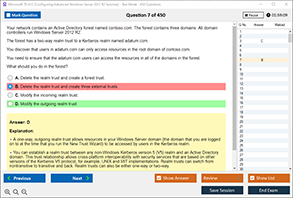Introduction
In the world of computer networking, the physical layer serves as the foundation of communication systems. It is responsible for transmitting raw data over physical mediums like cables, optical fibers, and wireless signals. The use of specific encoding methods is crucial for the efficient transmission of data and ensuring signal integrity over long distances. One such encoding method is 8b/10b encoding, which has become integral to certain network standards, especially in high-speed and high-performance systems.
In this blog, we will explore the concept of 8b/10b encoding and delve into the network standards that use it. We will also examine why this encoding technique is vital for ensuring reliable data transmission and how it has shaped the evolution of high-speed networks. Additionally, we’ll provide practical insights into how this encoding method is applied in real-world networking scenarios.
What Is 8b/10b Encoding?
8b/10b encoding is a method used to convert 8-bit data into 10-bit symbols, ensuring that the data is transmitted in a way that reduces the chances of transmission errors. This encoding scheme is primarily used to ensure that data signals remain balanced, thus minimizing errors like signal loss and bit stuffing. It is widely adopted in various physical layer standards due to its ability to maintain DC balance (equal numbers of 1s and 0s) and to provide sufficient transitions within the data stream, which is essential for clock recovery.
The method encodes 8 bits of data into 10-bit blocks, and the extra two bits are used for control, error detection, and synchronization. The result is a more reliable transmission of information across high-speed networks.
Key Benefits of 8b/10b Encoding
-
Clock Recovery: One of the main advantages of 8b/10b encoding is its ability to provide enough transitions in the data stream to allow the receiver to synchronize its clock with the transmitter’s clock, which is critical in high-speed communication systems.
-
Error Detection: The encoding scheme helps to detect errors in the transmission by using predefined bit patterns, which makes it easier to identify when data corruption occurs.
-
DC Balance: The encoding maintains a near-equal number of 1s and 0s, which ensures that the average voltage level of the signal is close to zero, preventing long-term drift in the transmission medium.
-
Data Integrity: 8b/10b encoding improves data integrity by ensuring that the data is transmitted in a way that can be easily interpreted at the receiver’s end, even over long distances.
Network Standards That Use 8b/10b Encoding
Various physical layer network standards have adopted 8b/10b encoding for different purposes. Some of the key standards that utilize this encoding method are:
-
Gigabit Ethernet (1000BASE-X): One of the earliest standards to implement 8b/10b encoding, Gigabit Ethernet, uses this encoding scheme to ensure reliable transmission over optical fiber and copper cables. The use of 8b/10b encoding in 1000BASE-X ensures that data transmission at speeds of 1 Gbps remains stable and error-free, even over long distances.
-
Fibre Channel: Fibre Channel, widely used in storage area networks (SANs), relies on 8b/10b encoding to provide high-speed communication between storage devices and servers. Fibre Channel operates at speeds ranging from 1 Gbps to 128 Gbps, with 8b/10b encoding used to maintain data integrity and clock synchronization across the network.
-
Serial ATA (SATA): SATA, a standard used for connecting storage devices like hard drives and SSDs, also uses 8b/10b encoding in its physical layer. SATA's implementation of 8b/10b encoding is critical in maintaining the integrity of data transfers, especially as the speed of modern storage devices continues to increase.
-
PCI Express (PCIe): PCIe, a high-speed interface standard used to connect components like graphics cards, network cards, and storage controllers to a computer’s motherboard, uses 8b/10b encoding for the transmission of data. This encoding is essential for ensuring reliable data transmission at high speeds of up to 32 GT/s (gigatransfers per second) in the latest PCIe 5.0 and PCIe 6.0 standards.
-
High-Speed Serial Links (HDMI, DisplayPort, etc.): Many high-definition video and audio transmission standards, such as HDMI and DisplayPort, use 8b/10b encoding to ensure that video signals are transmitted at high resolutions and frame rates with minimal error. This encoding allows for the delivery of high-quality audio and video streams without significant signal degradation.
Why Do These Standards Use 8b/10b Encoding?
The primary reason for using 8b/10b encoding in these network standards is to ensure the integrity and reliability of data transmission over high-speed networks. As data transmission speeds increase, the likelihood of transmission errors also rises. The 8b/10b encoding method helps mitigate these errors in the following ways:
-
Error Detection and Correction: The additional 2 bits added during the encoding process allow for simple error detection, which is essential for ensuring that data is transmitted accurately.
-
Maintaining Clock Synchronization: High-speed networks require precise clock synchronization between the transmitting and receiving devices. 8b/10b encoding ensures that enough transitions occur in the data stream to allow for accurate clock recovery, even at high speeds.
-
Prevention of DC Drift: The encoding helps to prevent the long-term drift of the signal’s voltage levels, which is critical for maintaining signal integrity, especially over long distances.
Challenges of 8b/10b Encoding
While 8b/10b encoding offers many advantages, it is not without its challenges. The encoding process introduces overhead because 10 bits are used to represent 8 bits of data, effectively increasing the required bandwidth. This overhead can become significant as data transmission speeds continue to increase. However, the benefits in terms of error detection, clock synchronization, and signal integrity far outweigh this cost in many high-speed applications.
In some newer high-speed standards, such as PCIe 4.0 and beyond, alternative encoding schemes like 128b/130b encoding have been introduced to reduce the overhead associated with 8b/10b encoding. These newer encoding schemes provide more efficient data transmission while still ensuring the same level of reliability and error detection.
Conclusion
The 8b/10b encoding method has played a pivotal role in ensuring reliable data transmission across high-speed networks. Its adoption in standards such as Gigabit Ethernet, Fibre Channel, SATA, PCIe, and various high-speed serial links highlights its importance in maintaining data integrity, clock synchronization, and error detection. While it introduces some bandwidth overhead, the benefits far outweigh the costs, especially in mission-critical systems where data accuracy is paramount.
For organizations and individuals looking to understand or implement high-speed network standards, understanding the role of 8b/10b encoding is essential. As we move toward even faster and more efficient data transmission methods, the principles behind encoding techniques like 8b/10b will continue to evolve, but their core function will remain vital in ensuring error-free and high-quality data communication.
At DumpsQueen, we provide in-depth resources and guidance on various networking standards and concepts, including encoding methods like 8b/10b. Our experts are here to help you stay up-to-date with the latest industry developments.
Free Sample Questions
Question 1: Which physical layer network standard uses 8b/10b encoding to ensure reliable data transmission?
A) Ethernet
B) PCI Express
C) Fibre Channel
D) All of the above
Answer: D) All of the above
Question 2: What is the primary benefit of using 8b/10b encoding in high-speed networks?
A) It reduces network latency
B) It helps in error detection and clock synchronization
C) It increases the bandwidth
D) It simplifies the physical layer design
Answer: B) It helps in error detection and clock synchronization
Question 3: How does 8b/10b encoding improve data transmission reliability?
A) By ensuring more efficient data compression
B) By reducing the number of transitions in the data stream
C) By maintaining DC balance and providing clock synchronization
D) By enabling faster data transfer speeds
Answer: C) By maintaining DC balance and providing clock synchronization



